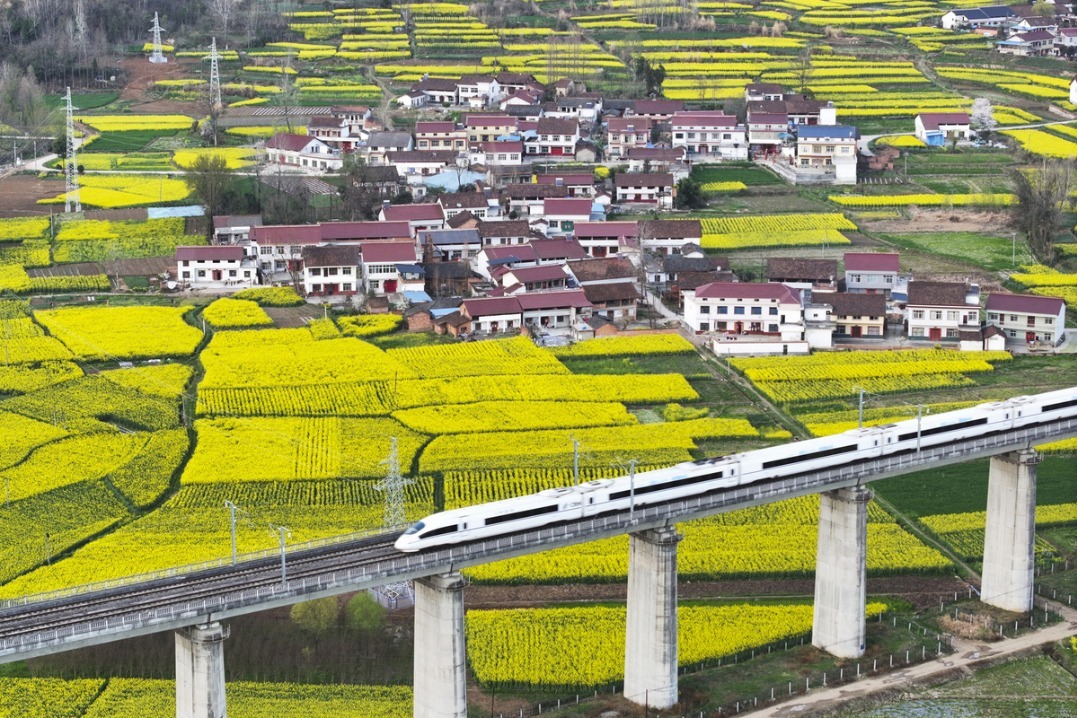Numbers of Yangtze finless porpoise increasing
Environmental efforts bringing endangered populations back to life


Gene pool
Poyang Lake in Jiangxi serves as a vital habitat for the porpoise. The 2022 survey showed there were 492 finless porpoises in the lake alone, which accounted for nearly 40 percent of the total population.
The provincial government established a 6,800-hectare reserve dedicated to porpoise conservation in 2004, emphasizing the protection of the species. When the fishing ban in the Yangtze basin was announced, Jiangxi acted faster than many other provinces — the moratorium began in 2020, a year earlier than the required date.
The national agricultural authority regards Jiangxi as "the key to the protection of the Yangtze finless porpoise", according to a 2022 report on Jiangxi provincial government website.
By this, it means that Jiangxi is a gene pool for the porpoise. In the past few years, Jiangxi has transported a number of porpoises from Poyang Lake to relocation protection bases in neighboring provinces such as Anhui and Hubei, in order to ensure genetic diversity there.
At present, the province is building its first relocation protection base for the porpoise. Designed to cover a total area of 800 hectares in Hukou, the base is expected to be able to accommodate up to 64 porpoises upon completion.
"The new base will be a necessary supplement to the existing on-site protection and keep porpoises safe from threats caused by fluctuating water levels and human interference," said Yu Xianhua, head of Hukou county's aquatic life protection center.
The fluctuation of the water level in Poyang Lake is so huge that the lake's surface area varies dramatically, and this can also cause problems for marine life. The lake experiences its highest water levels in July, with it gradually receding to the dry season from October to March. Previous reports show that depending on the water level, the surface area of Poyang can range between 500 square kilometers and 4,000 sq km. At its most severe, most of the lake bed was covered by grass and wetland.
"In dry seasons, groups of porpoises would swim into the saucer-shaped lakes that form, which poses a big risk to their safety," he said. In addition, the extraction of sand and minerals from the Poyang Lake bed would leave deep pits that could strand the porpoises.
Yu said when porpoises are stranded in "plate lakes" — those separated from the lake's main body during the dry season — and deep pits, his protection team and similar organizations take emergency measures to rescue them, including feeding and relocating them.
In February last year, when Jiangxi was hit by a serious drought, more than 100 porpoises in Poyang Lake were driven from shallow waters into deeper waters before things got worse, and eight porpoises were transported safely to relocation bases in Anhui and Hubei as well as a temporary care site in Hukou.
The two porpoises that were moved to Hukou received much attention. "We assigned dedicated personnel to take care of them, and we release an average of 1,500 kilograms of fish fry each month to feed them," he said, adding that the two porpoises have grown bigger.
Despite these efforts, problems remain. An undercover investigation by central environmental inspection teams in March found that there were still several problems in Jiangxi that threaten the lives of porpoises, including illegal fishing and agricultural runoff pollution in some parts of Poyang Lake.
The investigation was carried out in the same month as the State Council issued a notice announcing more targeted measures in support of the decadelong fishing ban.
In a gesture showing Jiangxi's resolve to protect the Yangtze ecosystem, Yin Hong, Party secretary of the province, and Ye Jianchun, the provincial governor, made inspections to counties mentioned by the central environmental inspection report in May, urging local authorities to seriously reflect on their negligence of duty and act promptly.
"Efforts must be made without any compromise to ... strengthen the protection of the Yangtze finless porpoises," Yin said.
























